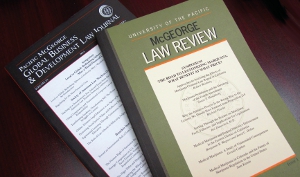Document Type
Article
Publication Date
2020
Abstract
Bathrooms are a bellwether of equality. Segregated bathrooms were at the center of the Civil Rights Movement. Accessible bathrooms were at the heart of the Disability Rights Movement. Now, gender-neutral bathrooms or bathrooms assigned by gender, rather than sex, are at the heart of the Transgender Rights Movement.
This Article is the first to examine the right to access bathrooms as it relates to the homeless community. The Article explores the current paradox where cities, counties, and states provide few, if any, public bathrooms for the homeless community and the public at large while criminalizing public urination and defecation.
To better understand this paradox, the Article contains two original multijurisdictional surveys. The first reviews the prohibitions on public urination and defecation in the ten municipalities with the most homeless individuals. The second explores the Freedom of Information Act and Public Record Act responses of those municipalities to requests for information regarding the public bathrooms they operate and potential barriers to use for homeless individuals (e.g., closing in the evenings or particular seasons, charging a fee for entry, being located in buildings requiring identification for entry, etc.). The Article contextualizes the paradox in relation to human dignity, public health, and the historical use of bathroom access as an exercise of power. It contends that the current scheme denies homeless individuals a basic sense of dignity, while undermining the health and safety justification for prohibitions on public urination and defecation by failing to operate public restrooms. The Article further argues that government actors use bathrooms to marginalize the homeless community in the same way that they have used them to marginalize women, people of color, individuals with disabilities, and transgender individuals. In exploring this use of power, the Article argues that prohibitions on public urination and defecation are part of a larger trend of criminalizing homelessness and the evolution of segregation.
Finally, the Article evaluates potential solutions to the paradox. The solutions reviewed include increasing the availability and accessibility of public restrooms, leveraging private industry, and reforming or challenging the law. The Article concludes that any long-term solution to the problem requires an examination of the paradox through the lens of the homeless community.
Publication Title
North Carolina Law Review
Volume
98
First Page
205
Last Page
272
Recommended Citation
Ron S. Hochbaum, Bathrooms As A Homeless Rights Issue, 98 N.C. L. Rev. 205, 209 (2020)



